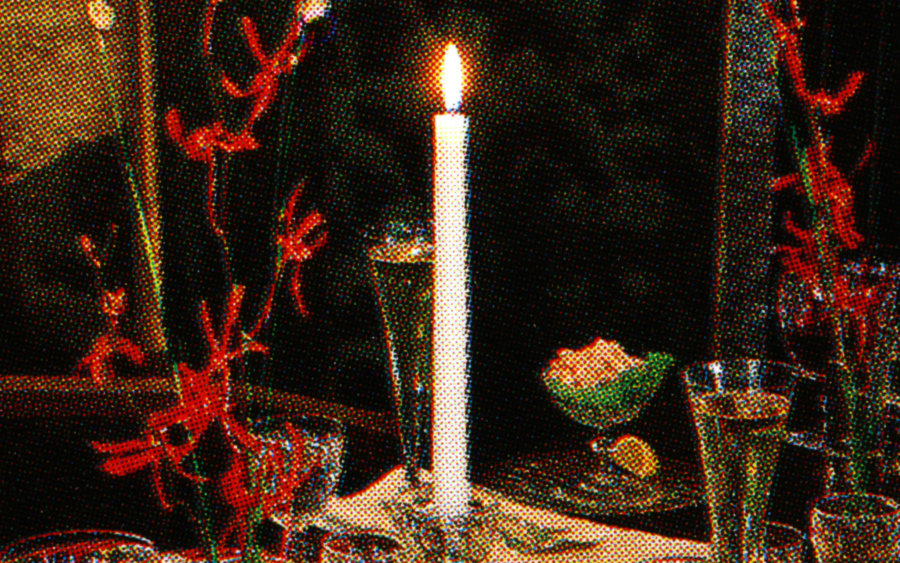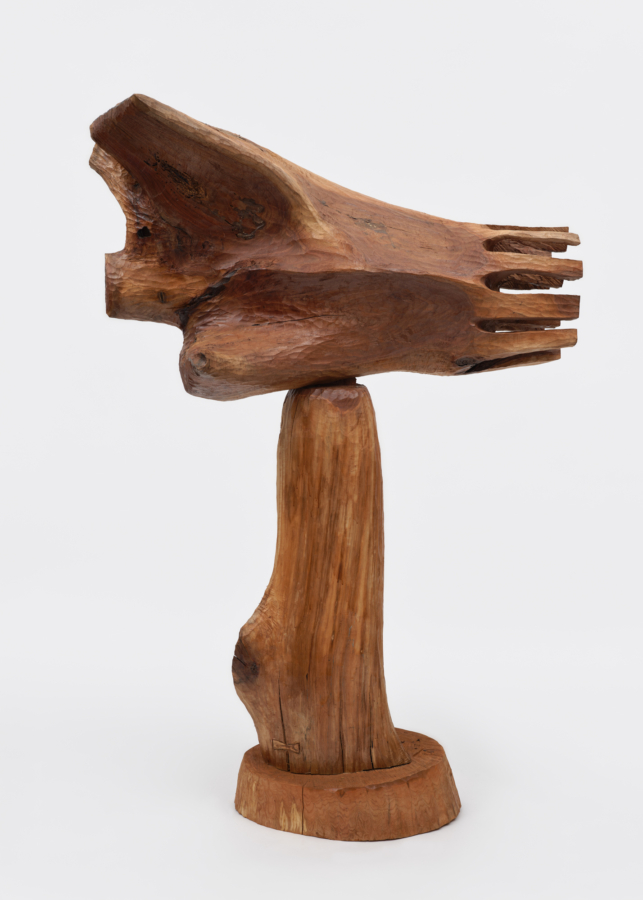Ladies and Gentleman, We Are Floating in Space
Robert Grosvenor, Brice Marden, John McCracken, Charlotte Posenenske, Ken Price, Robert Smithson, Anne Truitt
March 6–April 7, 2015
39 Great Jones Street
New York, NY 10012
Ladies and Gentleman, We Are Floating in Space
Robert Grosvenor, Brice Marden, John McCracken, Charlotte Posenenske, Ken Price, Robert Smithson, Anne Truitt
March 6–April 7, 2015
39 Great Jones Street
New York, NY 10012
The late 1960s was an era swept up by the current of a “post-medium” condition. Technology was rapidly advancing. “Specific Objects” were breaking the rectangular painting plane and delimiting the arrangement of composition. “Any materials can be used” said Donald Judd in 1965. As new materials were used, new procedures were explored and the avant-garde accelerated quickly even by avant-garde standards. Oil paints and canvas were inferior to their commercial and industrial counterparts—enamels and aluminum. Traditional artist’s materials were seen as familiar, too familiar to art and therefore limited. People were looking to the skies as the Space Race was at the height of activity. Sculptures were not being made of natural materials like marble and granite, but of artificial materials like plastic, resin and sheet metal—materials of the future for the present. Utopian materials from the world of tomorrow. In a 1966 essay in Artforum, Robert Smithson called this work the “new monuments”—unlike the old monuments of classical sculpture and architecture which cause us to remember the past, the new monuments cause us to forget the future. It was against the ages.
Often compared to Stanley Kubrick’s 2001 monoliths, John McCracken’s plank sculptures—made of plywood covered in fiberglass and polyester resin and lacquered in bold colors associated with automotive paint—also existed in multiple dimensions of time and space. They stand on the floor with the rest of the physical world while reaching for the upright wall—the space of painting, of imagination, the domain of immaterial space. Dependent on physical architecture, McCracken’s plank insists that the relief it occupies is in the space of this world, while indicating infinite extensions to another.
Using similar industrial techniques, Charlotte Posenenske created sculpture out of sheet metal sprayed in monochrome paint. Her use of commercial production techniques and materials was a way to make democratic objects that could be separated from their function as art. “I make series because I do not want to make single pieces for individuals, in order to have elements combinable within a system, in order to make something which is repeatable, objective, and because it is economical. The series can be prototypes for mass production.” (“Statement” [Manifesto], Art International no. 5, May 1968). The work Yellow Reliefs Series C (1967) is an installation of several identical yellow wall reliefs hung in a row, with the space between each relief doubling to represent acceleration, movement, and consequently, time.
Since the Futurists, speed has become a metaphor for temporal progression made visible. The moving object becomes the vehicle of perceived time, and time becomes a visible dimension of space. Robert Grosvenor’s Aero Car (1969), made fifty years later holds similar values. Its aerodynamic form evokes the appearance of a spacecraft which has landed on earth to compete for the land speed record across the salt flats of Utah—a sleek acid green surface and seemingly weightless body.
Forms of an extraterrestrial character also exist in the ceramic sculptures of Ken Price. Amorphous lumps and nebulous blobs make up Price’s surreal vessels, which one would imagine contain coffee, booze or even a slimy green liquid or hot red lava. The sculpture’s surface becomes an inhabitable landscape for creatures that are familiar but questionable as belonging to our world.
Anne Truitt’s totemic sculpture of pure color, Pith (1969), has an ethereal presence with sublime mystery. The column, in the wider world, is an architectural support but Truitt’s column has no architectural function. It seems to fight gravity as it hovers a quarter-inch off the ground and looks as though it will covertly creep in either perpendicular direction, moving like the rook on a chessboard. It possesses the “otherness” of an object from an alternative place in both time and space. Like something out of a science fiction novel—a lone pylon charged with electrical energy or the remaining tower of a monumental gateway.
Brice Marden’s graphite drawing also brings to mind a portal to another dimension. More sculpture than drawing, the surface of the work has been methodically and mechanically worked by graphite that it appears to have transformed paper into lead. It is a picture that evokes the image of mathematician Blaise Pascal’s universe: “an infinite sphere, the center of which is everywhere, the circumference nowhere.” The drawing becomes a site for meditation, as the viewer must slow their senses to sync with the object. A plane on which emptiness is form, illustrated in segments as on a map of an unchartered area of land.
Viewing Robert Smithson’s most famous earthwork, Spiral Jetty, from above sends one into a spinning sensation. In his multivalent body of work, Smithson introduced ideas of timelessness, infinity, and teleportation—of existing both “here” and “elsewhere.” The film, Spiral Jetty (1970) “began as a series of disconnections, a bramble of stabilized fragments taken from things obscure and fluid, ingredients trapped in a succession of frames, a stream of viscosities both still and moving. And the movie editor, bending over such a chaos of ‘takes’, resembles a paleontologist sorting out glimpses of a world not yet together, a land that has yet to come to completion, a span of time unfinished, a spaceless limbo on some spiral reels. Film strips hung from the cutter’s rack, bits and pieces of Utah, out-takes overexposed and underexposed, masses of impenetrable material. The sun, the spiral, and salt buried in lengths of footage.” (Robert Smithson: The Collected Writings, 1996).
We would like to thank the following individuals and institutions for their cooperation in this exhibition: Robert Grosvenor, Paula Cooper Gallery, Brice Marden, Matthew Marks Gallery, David Zwirner Gallery, Peter Freeman Inc., James Cohan Gallery, and Mitchell-Innes & Nash.



